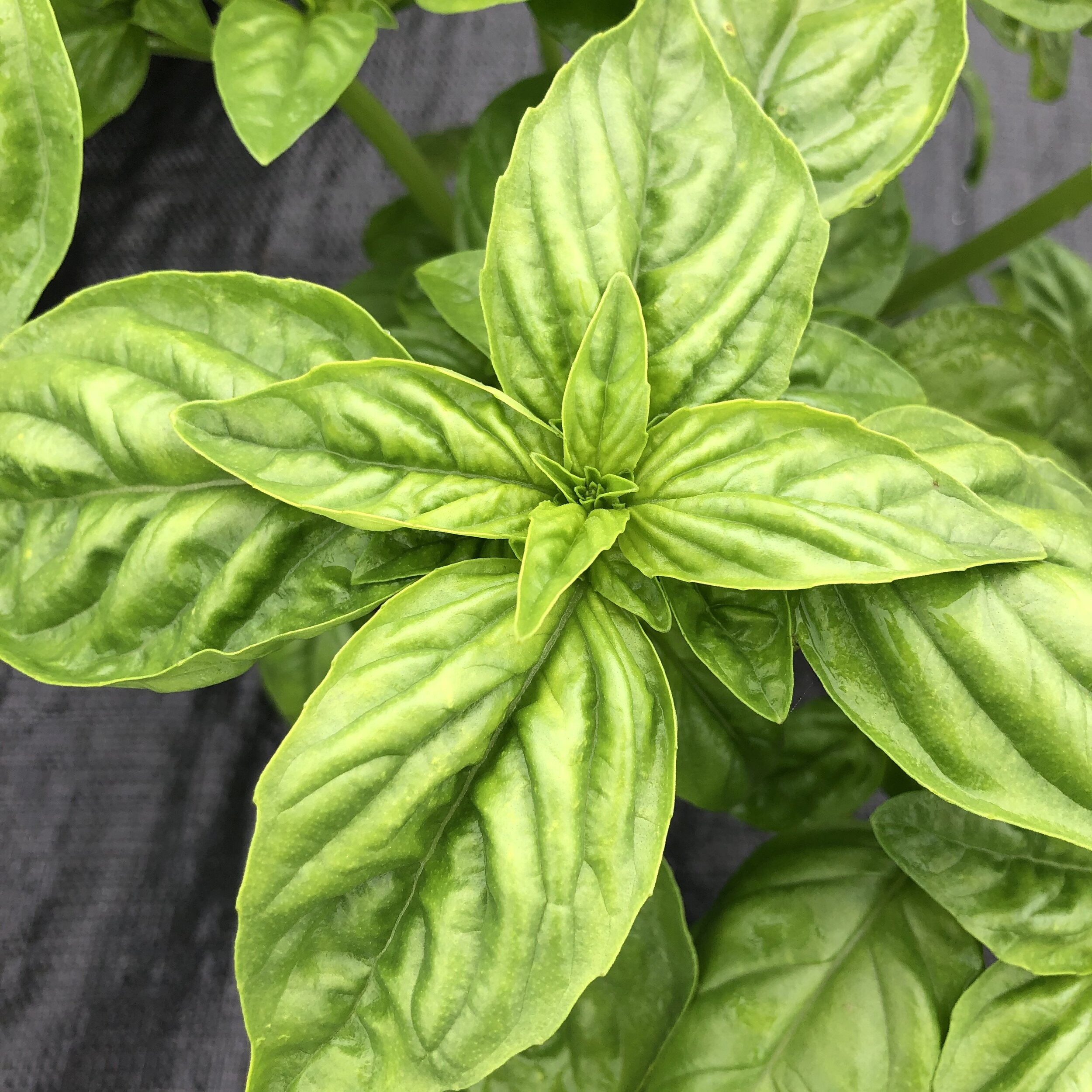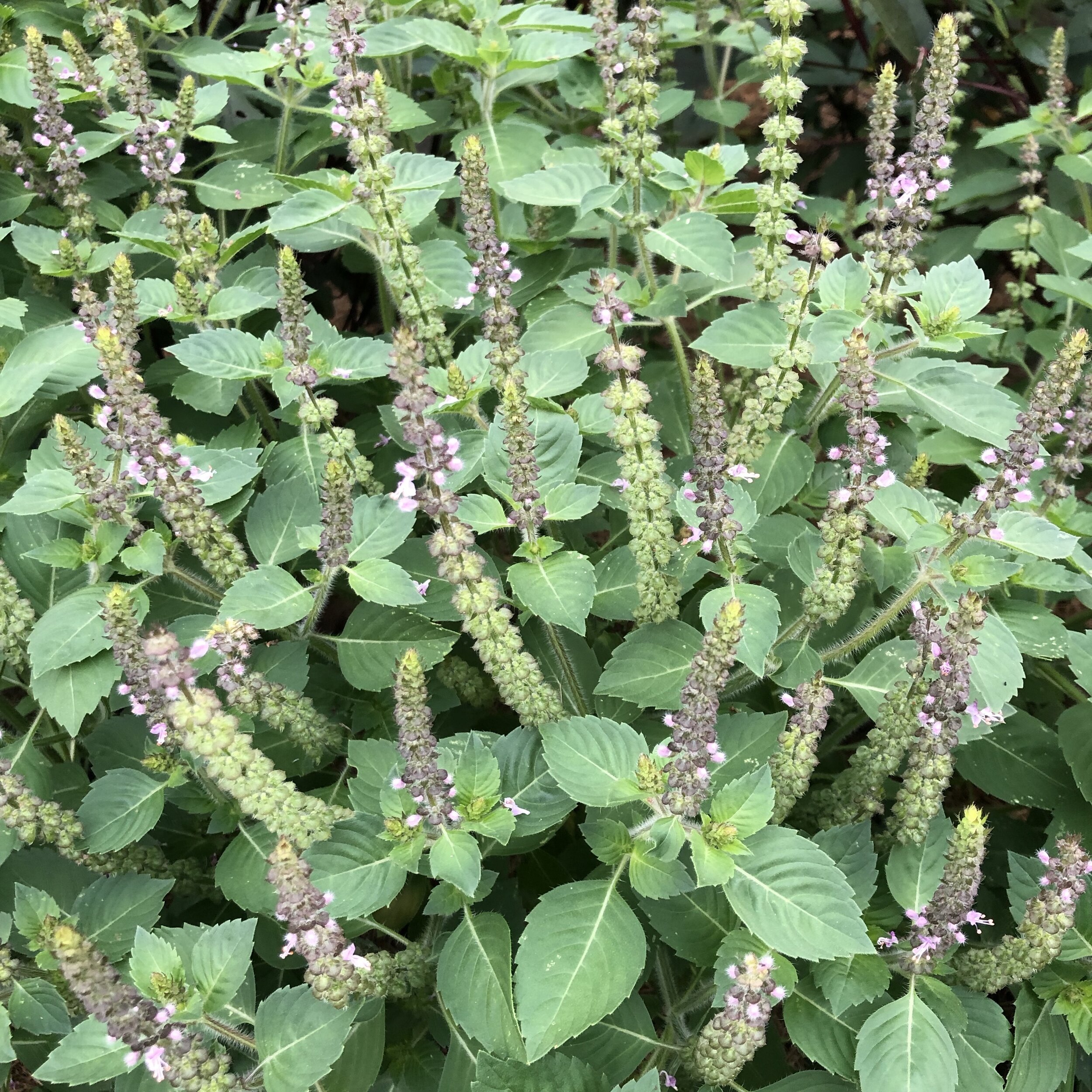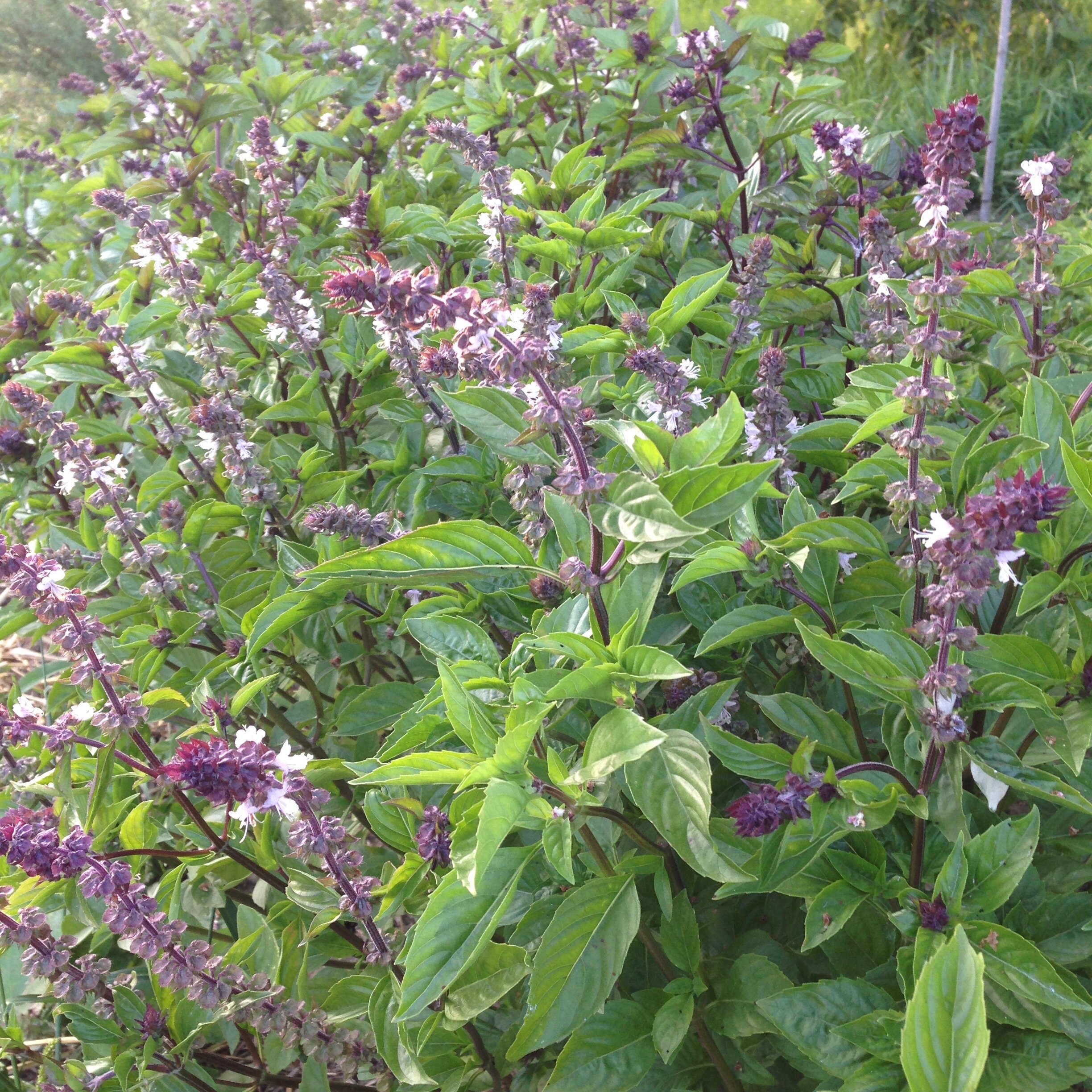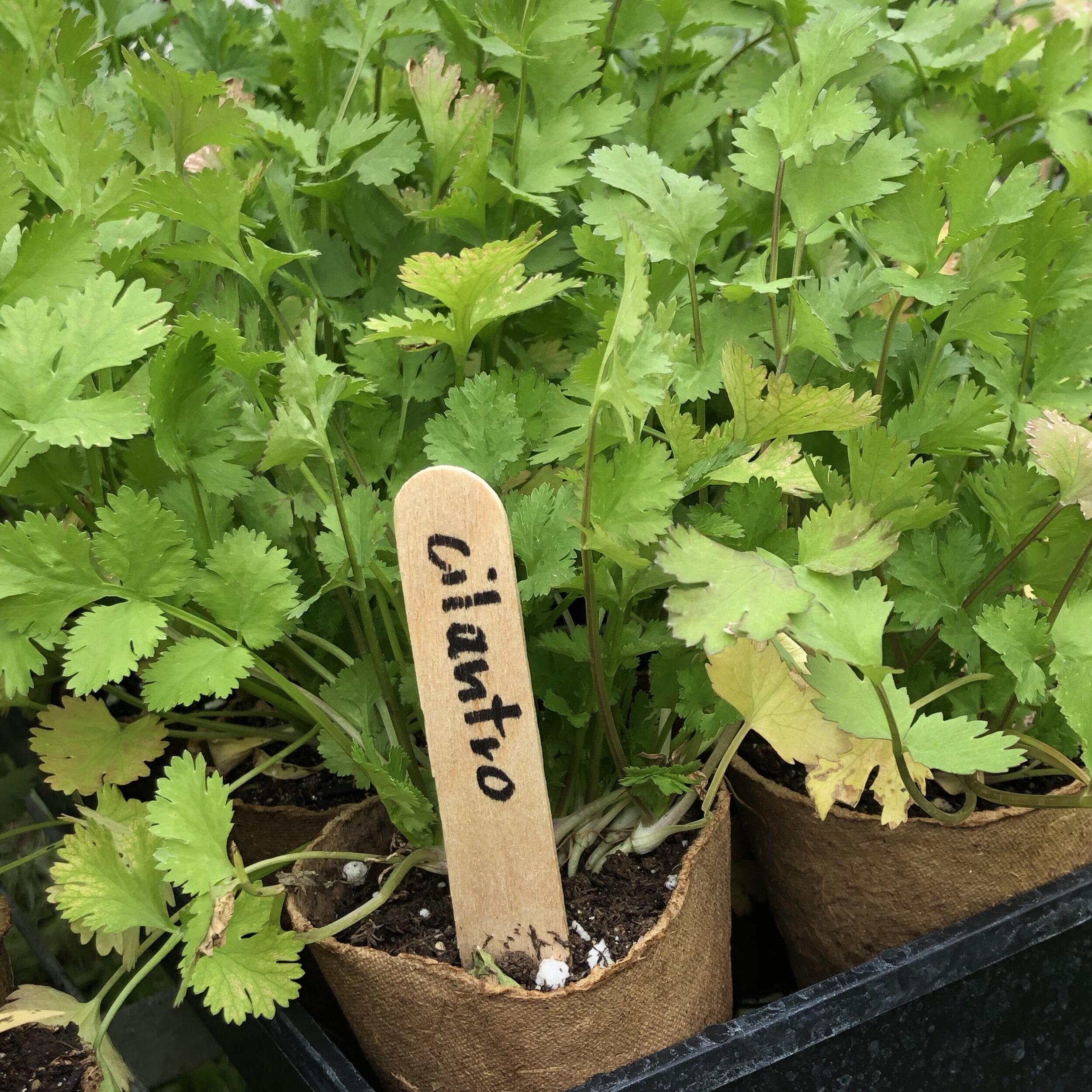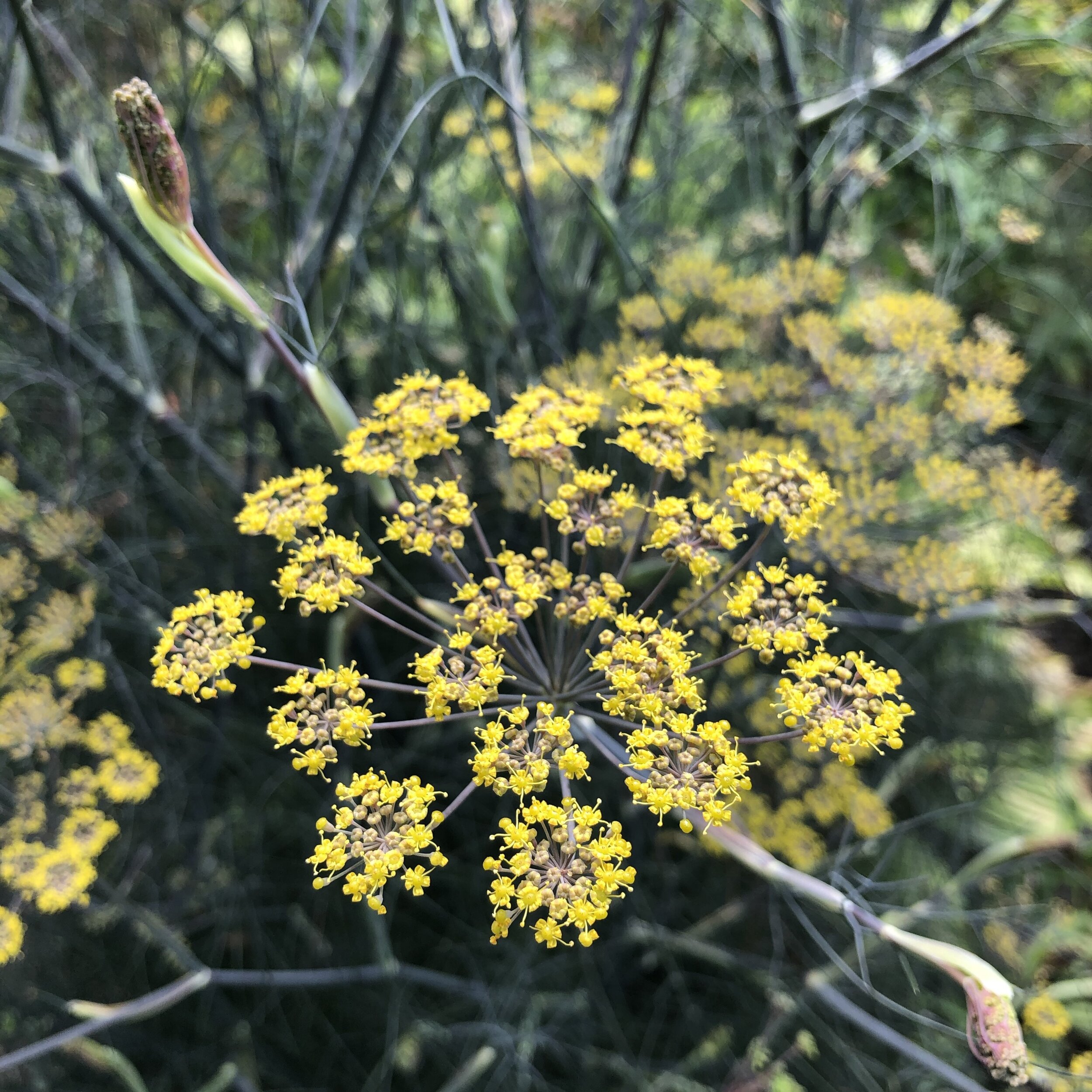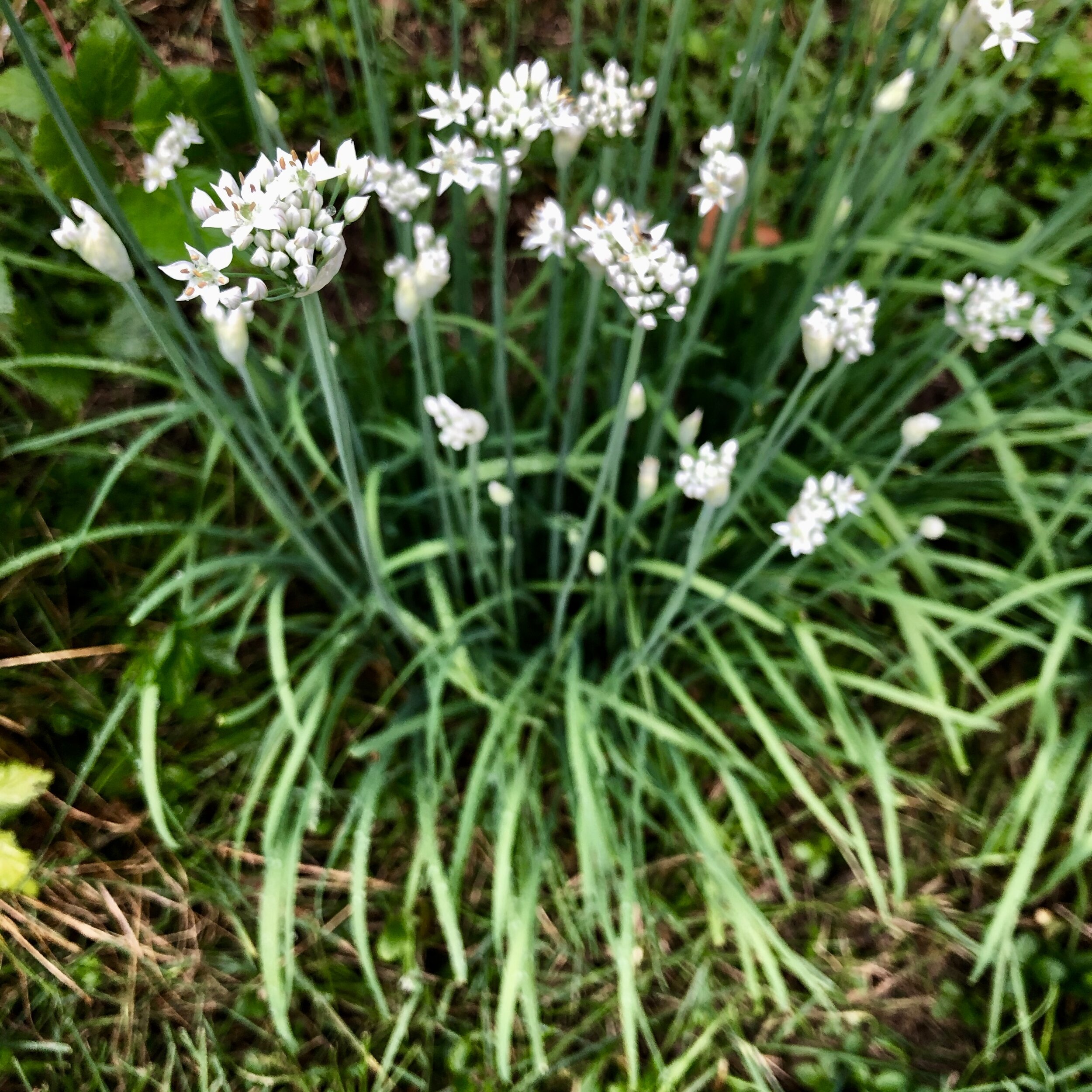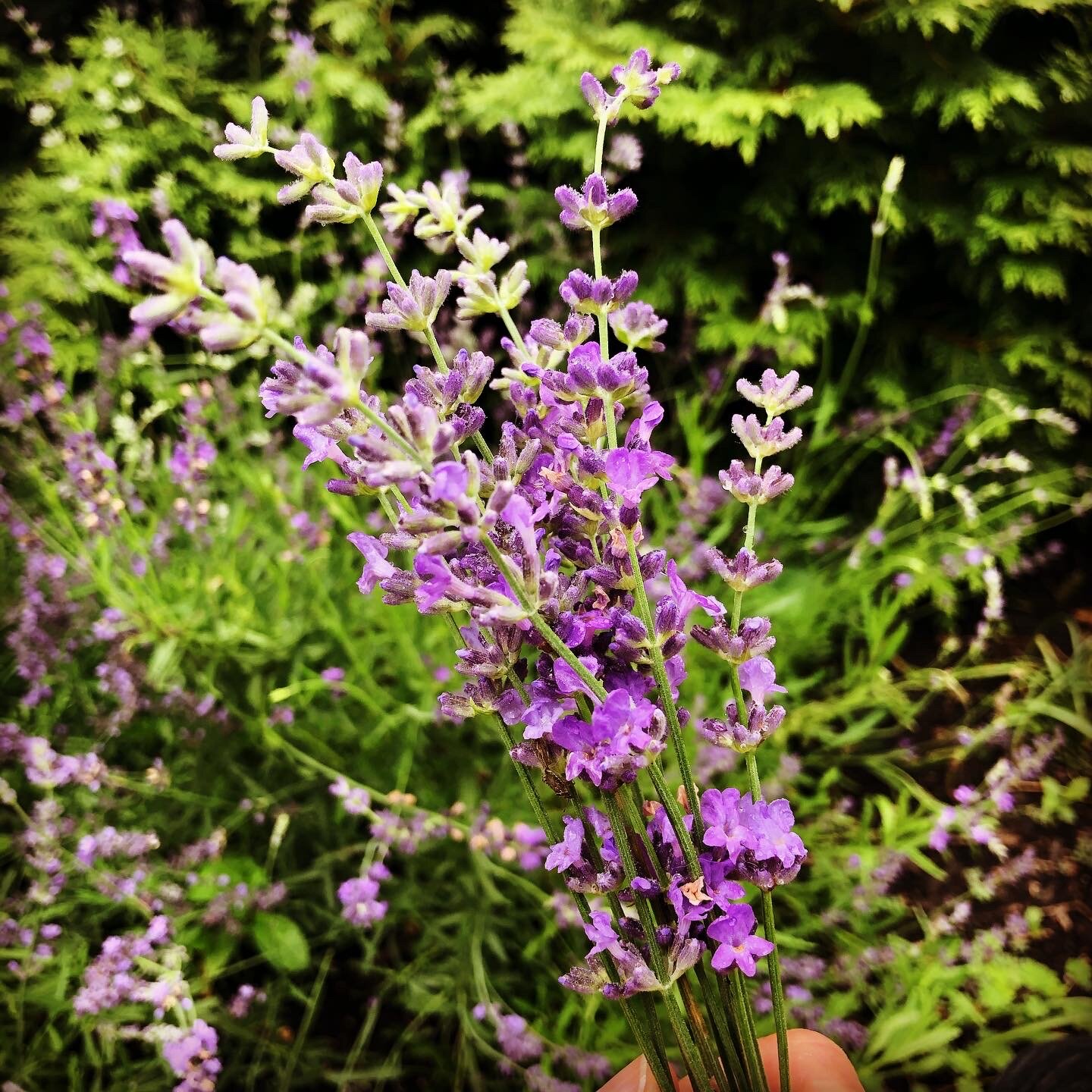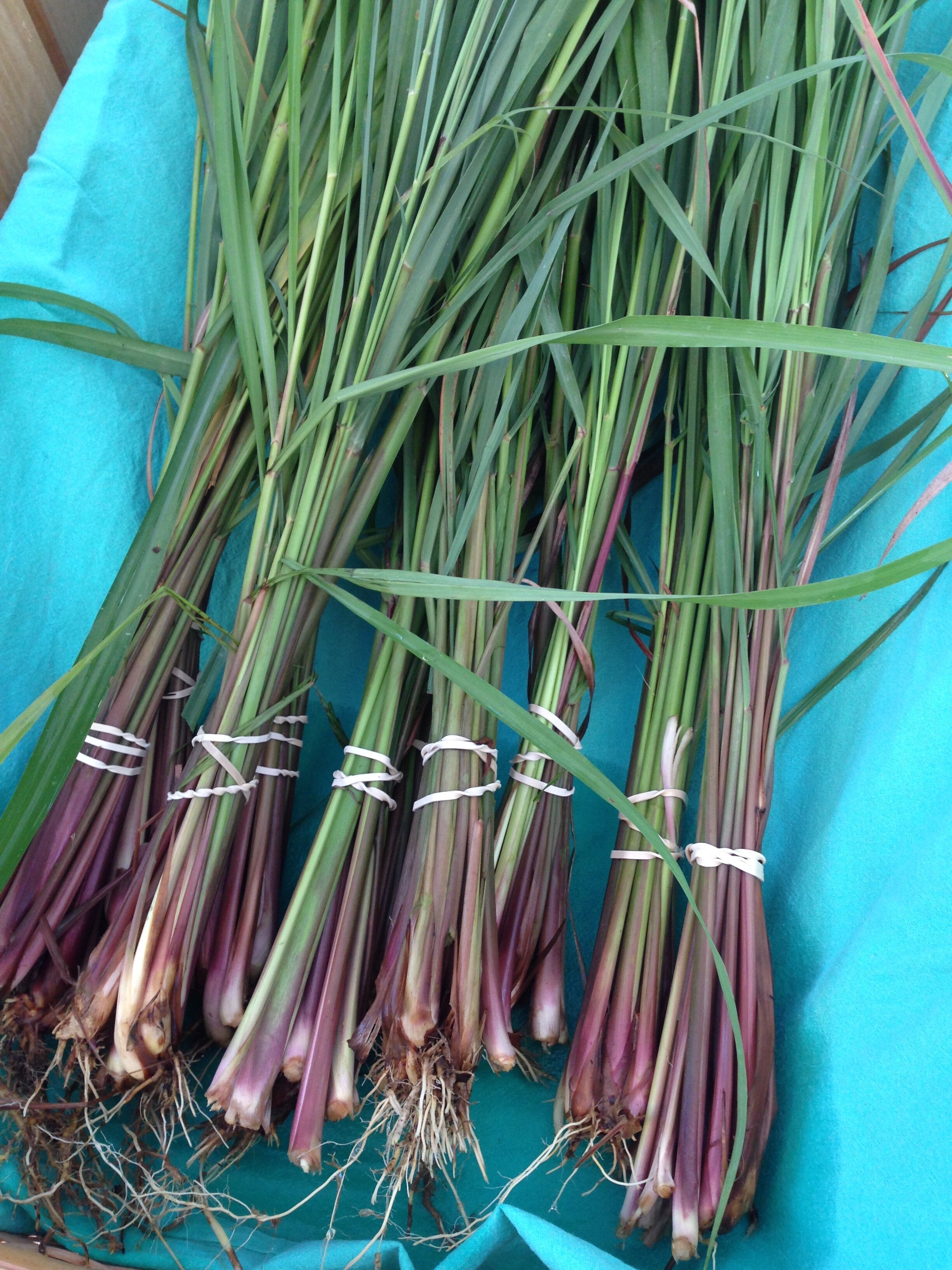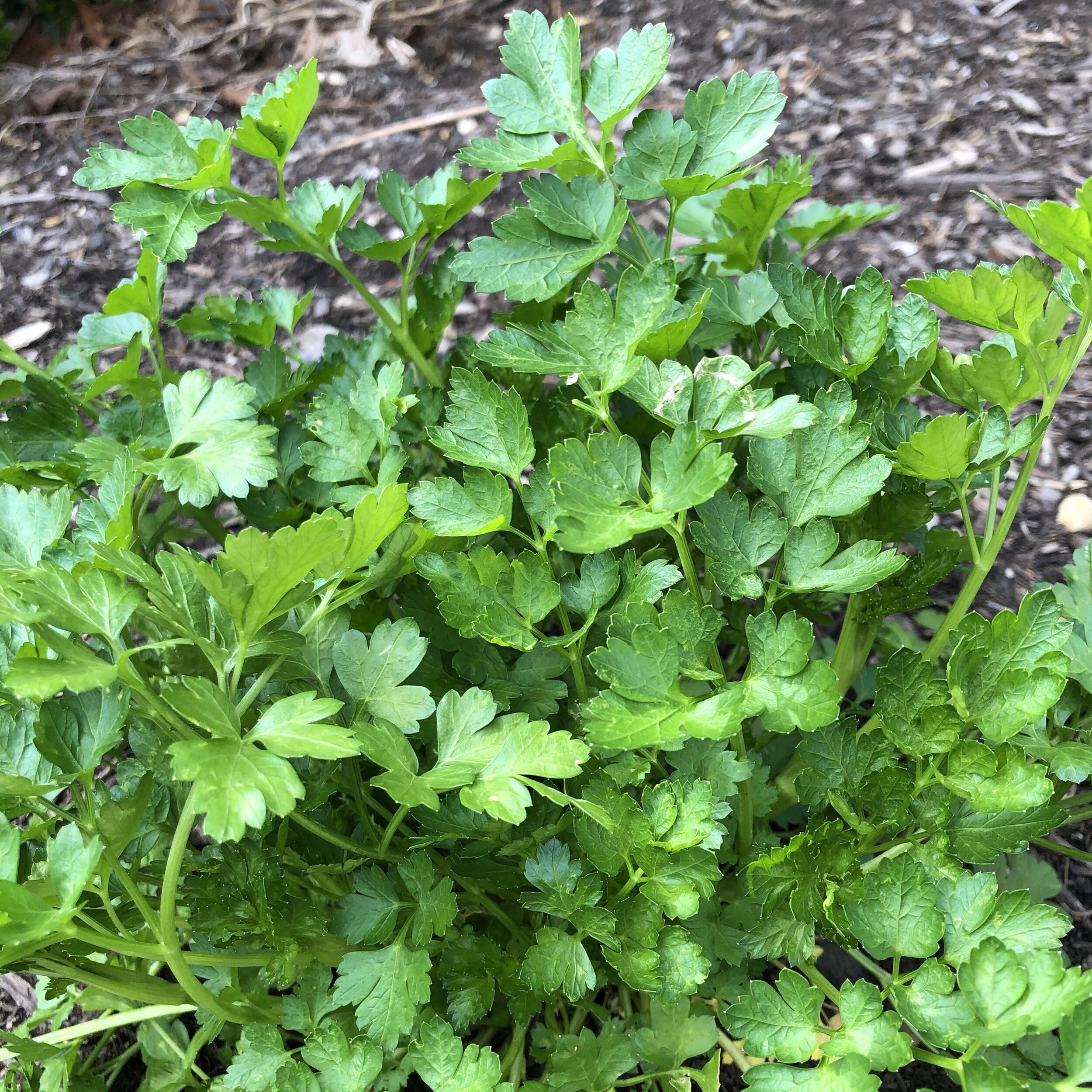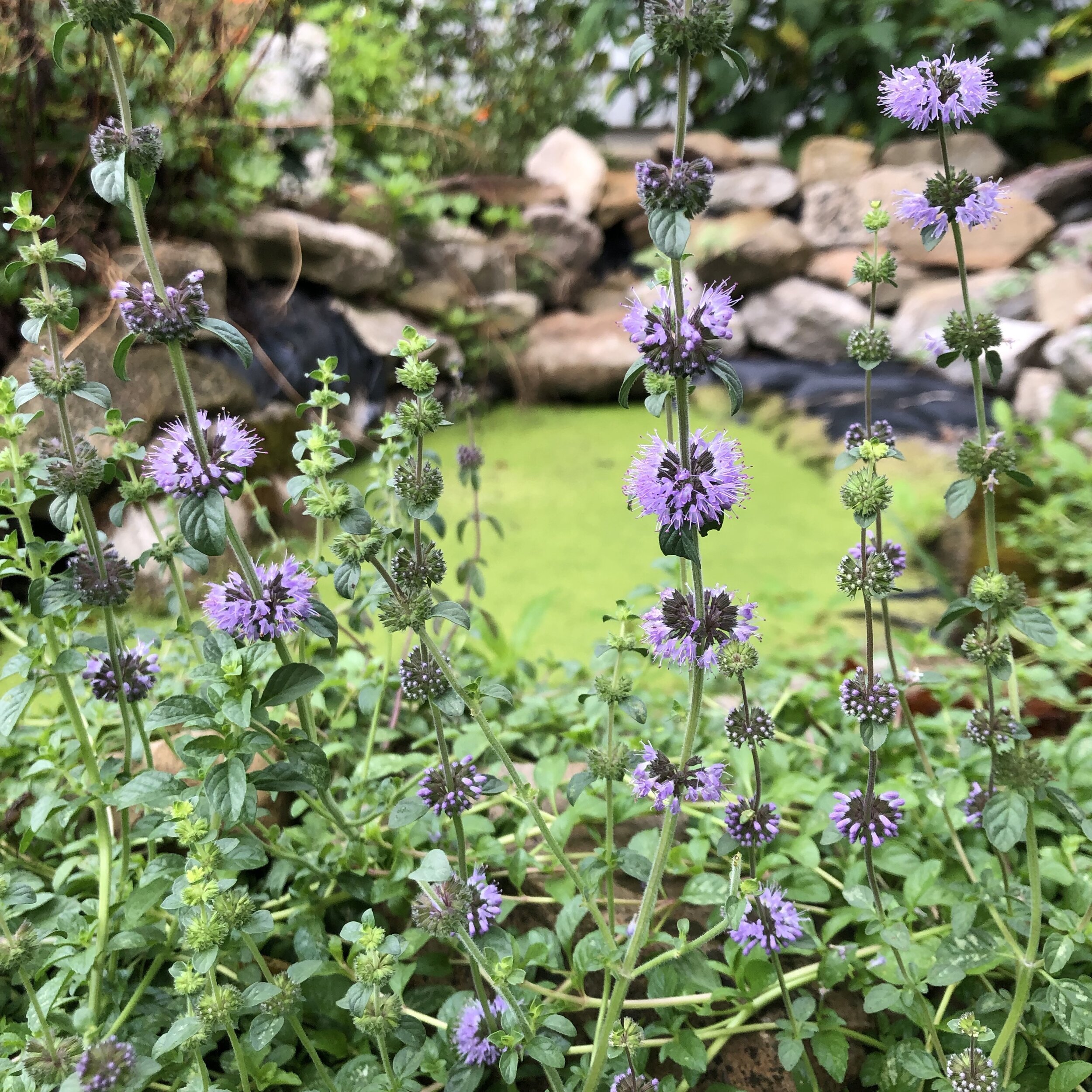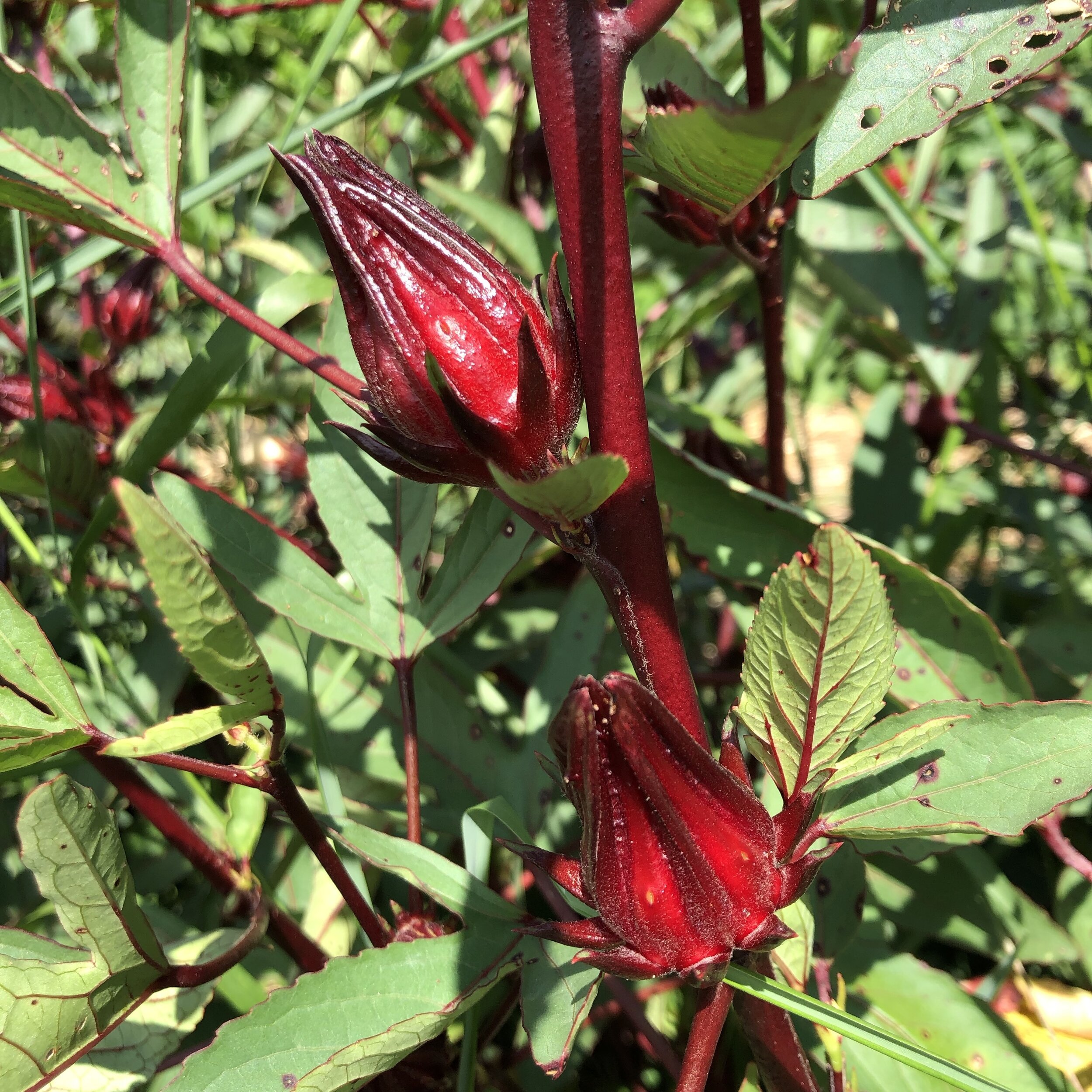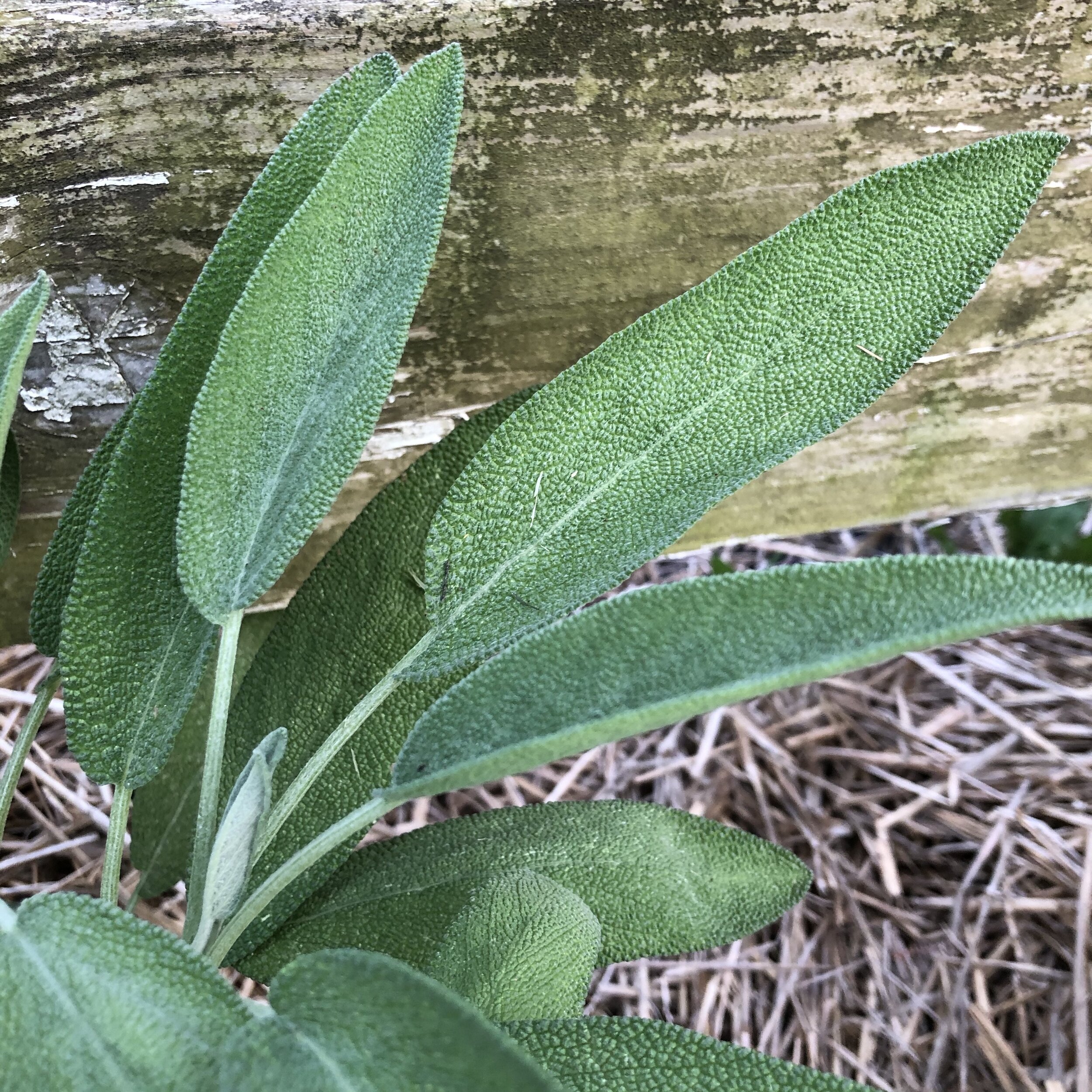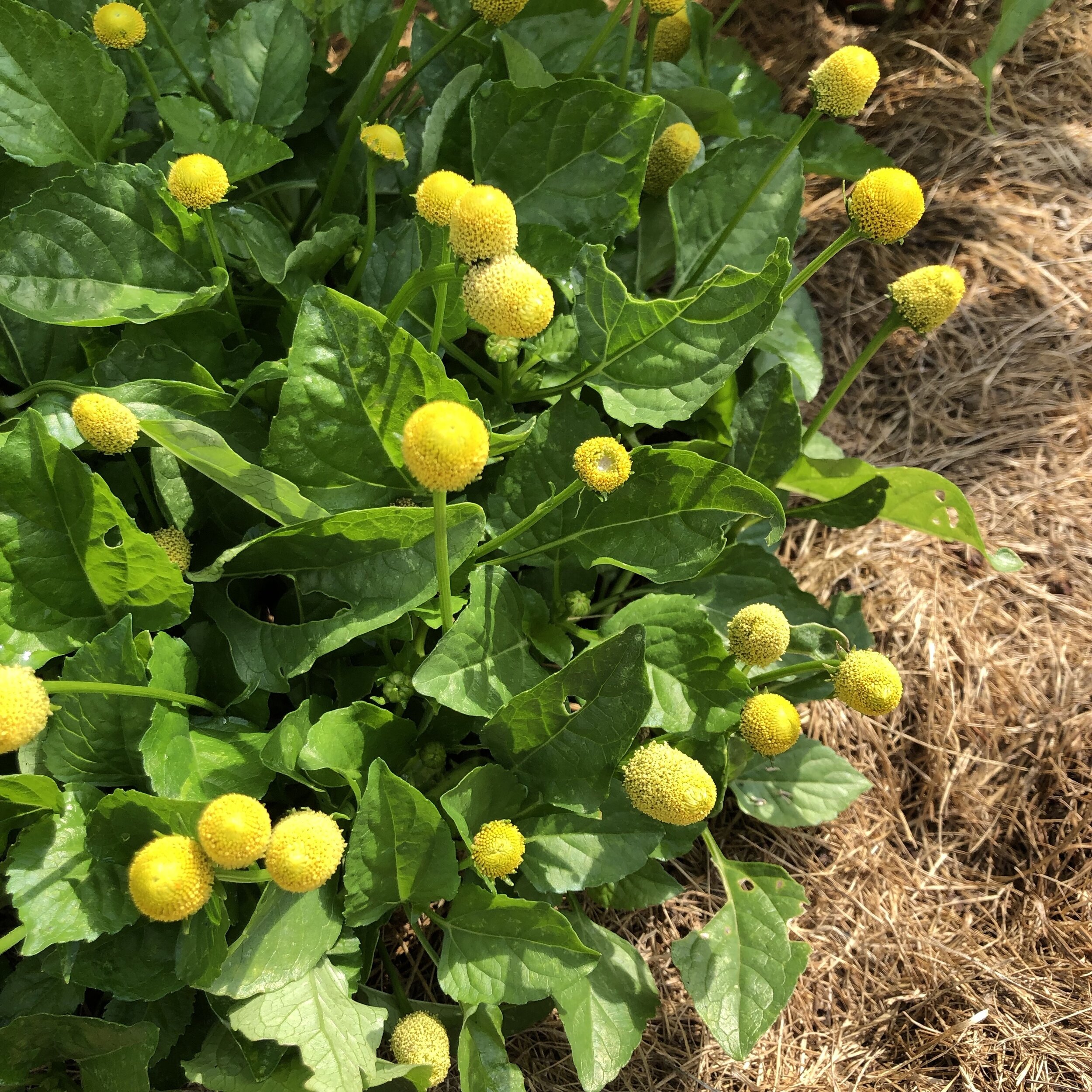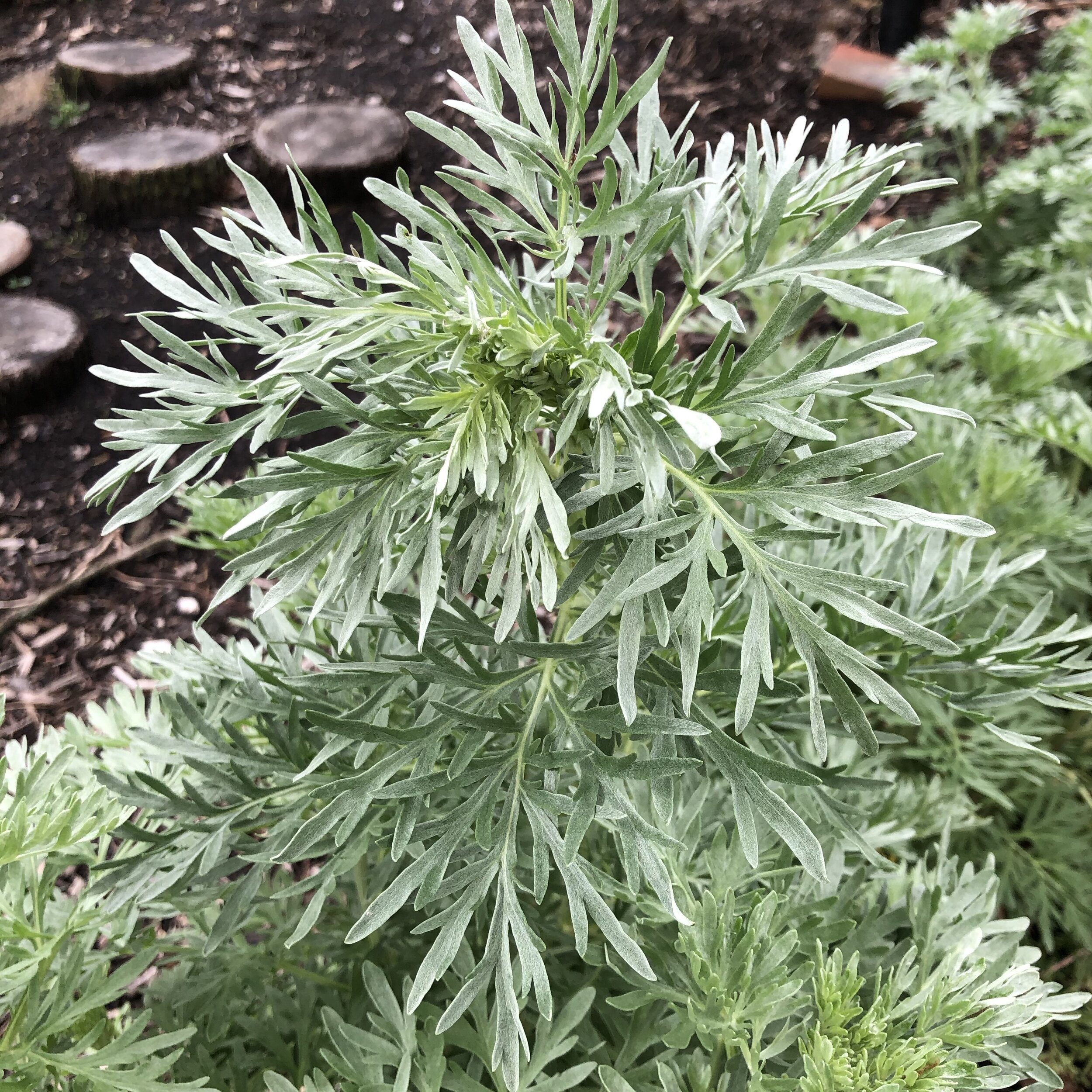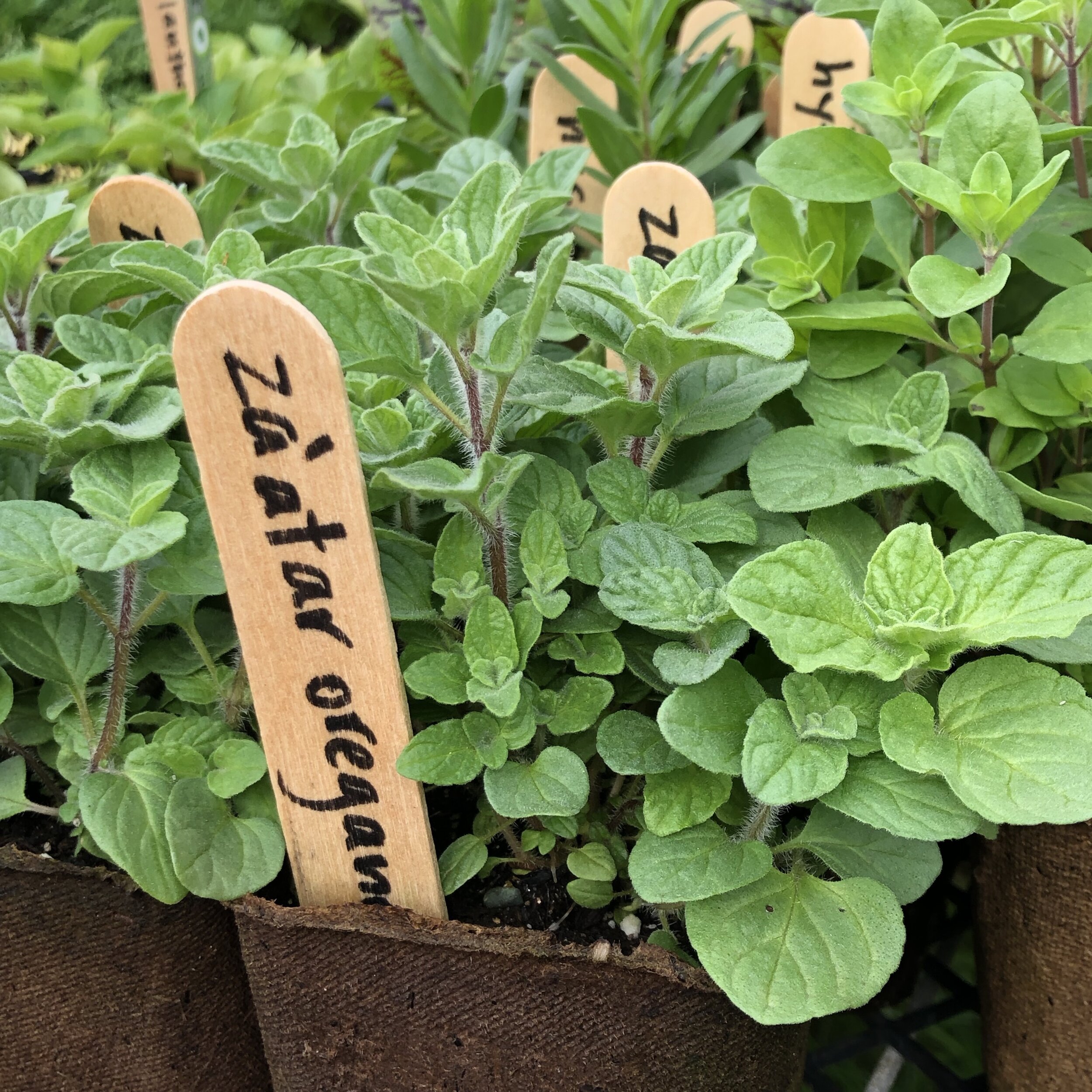herb varieties for 2025
plant key
• Open-pollinated, unless otherwise noted with “F-1 hybrid.”
• Annual, unless otherwise marked “P” for Perennial or “SSA” for Self Sowing Annual
• Days to maturity are from transplant. (This means start counting when you put the plant in the ground. Take these numbers with a grain of salt; there are a lot of variables to take into consideration.)
• Varieties may fluctuate year to year
Size pot available:
3” = 3” round biodegradable pot (18 / tray) - $4.00 each
3.5" = 3.5" square biodegradable pot (18 / tray) - $5.25 each
5” = 5” round biodegrable pot (likely a more mature two year old plant)
Basil
Ocimum basilicum, unless otherwise noted.
Dark Opal
Description coming soon
Genovese
70 days. 3”
The classic Italian variety for pesto connoisseurs. Slightly smaller, but more potent leaves. You’ll see it coming by the aroma!
Holy Basil (Ocimum sanctum)
100 days. 3”
Also known as ‘tulsi.’ Has a spicy mint/clove/anise scent. Used historically in Ayurveda to “counter life’s stresses.” You might consider this medicinal plant for treating anxiety and stress or for its antioxidant and anti-inflammatory properties. (As always, consult your herbalist or doctor.)
Mrs. Burns Lemon
64 days. 3”
Intense lemony fragrance. This is an heirloom variety, hailing from New Mexico and first popularized by Native Seeds/Search.
Thai Basil
60 days. 3”
A distinctive licorice/anise scent. Fine leaves with purple stems, seed heads and flowers. Grows to 12-18” tall. Indispensable for Thai food or atop a steaming bowl of pho.
Catnip
description coming soon
Chamomile ‘Zloty Lan’ (Matricaria recutita)
SSA. 3.5”
Commonly used in herbal teas as a sleep aide and to calm the nerves. Harvest the daisy-like flowers when the petals fall back from the center.
Chives (Allium shoenoprasum)
P. 80 days. 3.5”
A grass-like herb with delicate onion-y flavor. Lavender flowers are edible. Hardy to zone 3, a tough plant that should be divided every few years.
Cilantro (Coriandrum sativum)
50-55 days. 3”
Cilantro’s a tricky one. It likes to bolt (go to seed) especially in hot weather. It’s not your fault, it just happens! If you’d like a steady supply, you need to keep re-planting. If you hate cilantro, never mind, you have a genetic trait that truly makes it taste like soap. If you love it, eat up, because it’s super healthy, even chelating heavy metal toxins in your body.
Dill, ‘Bouquet’
3"
Harvest the foliage (dill weed) before the seed stalks mature for the best flavor. But to attract beneficial insects, let it go to flower! The flowerheads are also perfect for pickles.
Fennel, Bronze
3”
On the backburner due to low sales. Let me know if you’d like to see it back!
Garlic Chives (Allium tuberosum)
Description coming soon
Lavender ‘Munstead’ (Lavandula angustifolia)
P. 3.5”, 5”
A compact strain of English lavender whose flowers range from pale blue to dark violet. Reaches 12 - 18” in height and width.
Lemon Balm (Melissa officinalis)
P (also self sows). 3.5”
Smells wonderful in the garden and adds a lovely lemon note to herbal teas. Harvest the leaves for various purposes before the plant goes to flower, but its flowers are also edible and attract bees. (Hence the name ‘Melissa’ - Greek for honeybee.) Easy to grow mint relative that will spread readily if allowed.
Lemongrass - East Indian (Cymbopogon flexuosus)
3.5”
Native to southeast Asia, lemongrass is perennial in zones 9 - 11, but not here in Ohio. You can savor its haunting citrusy scent all summer long and then bring it inside for the winter. An actual grass, it can grow quite a bit in one season, reaching 3 - 4 feet tall. Wear gloves and long sleeves to harvest the stalks by division at the base, or cut the tops for herbal tea. Here’s a great little 3 minute primer on how to use it in the kitchen.
Lovage (Levisticum officinale)
P. 3.5”
On the backburner due to low sales. Let me know if you’d like to see it back!
Underappreciated, this multipurpose herb has leaves that taste like celery. Use the young leaves in salads, soups, poultry and potato dishes. You can also use the seeds to flavor baked goods. Also a striking plant that reaches 3 - 6 ft tall and produces umbel-shaped flowers that attract beneficial insects. Hardy to zone 4.
Mexican Mint Marigold (Tagetes lucida)
3.5”
Its sweet licorice flavor makes a fine substitute fro French tarragon. Lovely little yellow flowers are edible and bloom all summer, brightening your herb garden. Reaches 16 - 20” in height.
Mint, Spearmint (Mentha spp.)
P. 3.5”
Classic sweet spearmint, perfect for tea or cocktails.
Mint, Peppermint
Description coming soon
Oregano Greek (Origanum vulgare hirtum)
P. 3.5”
The classic herb for Italian and Greek cuisine. Hardy to zone 4.
Parsley, ‘Gigante d’Italia’ (Petrsoselinum crispum)
70 days. 3”
A flat-leaved variety hailing form northern Italy with a rich, sweet flavor. Reaches 12” in height with a steady supply of large leaves.
Parsley, ‘Triple Curled’ (Petroselinum hortensis)
On the backburner due to low sales. Let me know if you’d like to see it back!
68 - 75 days. 3”
A fast-growing variety with closely curled, dark green leaves.
Pennyroyal
3.5”
On the backburner due to low sales. Let me know if you’d like to see it back!
Rhubarb, ‘Victoria’ (Rheum rhabarbarum)
P. 3.5”
A fast-growing green-stemmed variety, excellent for pie. An English heirloom variety, named in honor of Queen Victoria.
Roselle Hibiscus (Hibiscus sabdariffa)
3.5”
This is the flower behind Jamaican Sorrel drink and Red Zinger tea. The familiar hibiscus flowers give way to bright red, fleshy calyces which surround the seed pod. Separate the calyx (sepals) from the seed pod and dry to make a festive drink all winter long. The plants get big; give 2 - 3 feet between them.
Rosemary (Rosmarinus officinalis)
3.5”, 5”
With a little luck and some protection, you might get rosemary to overwinter in Ohio, but if you want to make sure it survives the cold, pot it up and bring it in. This Mediterranean evergreen shrub provides a classic spicy flavor, excellent with fish, potatoes and lamb.
Sage Broadleaf (Salvia officinalis)
P. 3.5”
The familiar culinary sage, with fuzzy grey-green leaves. Perennial, hardy to zone 4, but you may want to replace it every few years as the plant grows woody with age.
Sorrel Red Veined (Rumex sanguineus)
P. 3.5”
Also known as Bloody Dock. While largely grown as an ornamental, it is beautiful and edible with the same lemon flavor as French Sorrel. (Though you should exercise caution if you have a condition making you sensitive to oxalic acid.) Dark maroon stems and veins add striking color and lemon-y zest to your salad. Harvest in spring when the leaves are young. Self sows and prefers moist soils. Hardy to zone 6, maybe even 4 or 5.
Thyme, German (Thymus vulgaris)
P. 3.5”
A creeping, mat-forming perennial hardy to zone 4. A standard in the kitchen, it also has lavender flowers that attract bees.
Wormwood
On the backburner due to low sales. Let me know if you’d like to see it back!
P. 3.5”
Za’atar (Origanum syriacum)
3.5”
A delicious oregano that is a necessary ingredient to the Middle Eastern spice blend of the same name. An addicting topping for flatbreads or sweet potato fries, make your own za’atar seasoning with this herb, sumac, toasted sesame seeds and sea salt.

